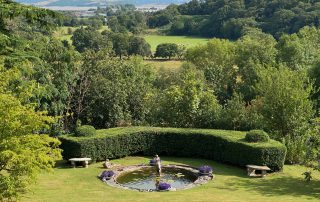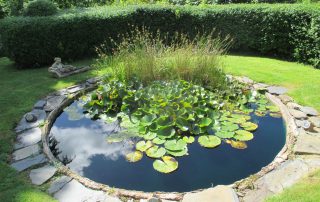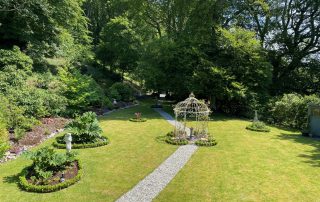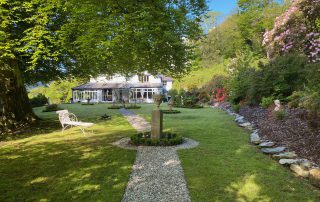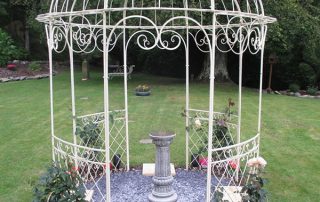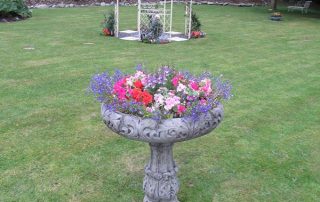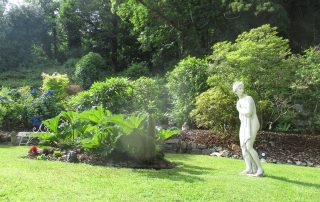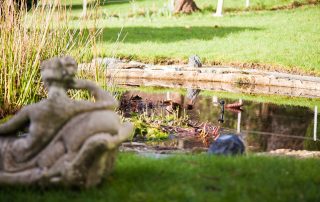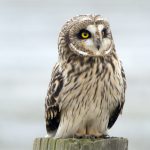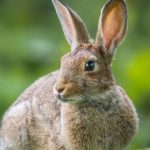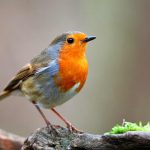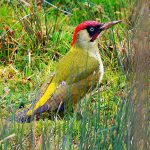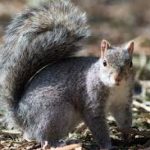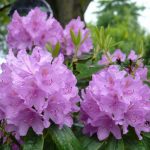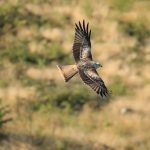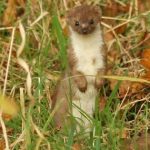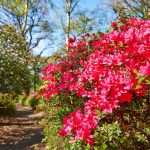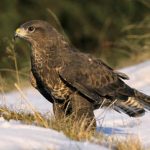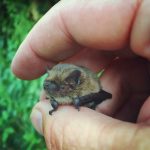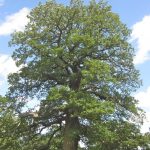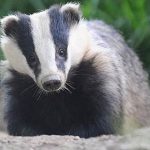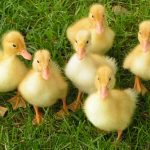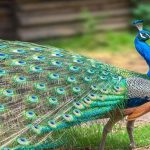
Plas Wildlife & Gardens
Sir Kyffin Williams the esteemed Welsh landscape artist once said when visiting the house and gardens “The view from its veranda was among the finest in Europe”. As a result of the areas striking natural beauty other notable artists have also come to the area…
Our formal lawned gardens, waterfall and 40 acres of ancient woodlands are no exception housing a rich and diverse abundance of flora and fauna.
The ancient woods above the house would have been in existence when William Madocks acquired the site consisting mostly of Sessile oak. A tree enthusiast he planted a great many beech trees after purchasing the estate in 1798 and to this day, they dominate the immediate area. He very much designed the house and grounds in the ‘romantic manner’ peacocks wandered freely, roses and mignonette were planted as well as sweet peas his favourite flowers. The site was far more extensive then with both kitchen and ornamental gardens. Vines were planted along the colonnade and the kitchen garden stocked with fruits and vegetables for use in the house. The important elements being the views, trees and kitchen garden with the original informal layout remaining much unaltered to this day. Interesting to note that the botanist, gardener / landscape designer and horticultural author John Claudius Loudon stayed at The Plas for Christmas in 1806. Described as the ‘father of the English garden’ without him it is unlikely that we would have the modern garden in its present form and the passion we have for gardening today. He also founded ‘The Gardener’s Magazine and was the author of the ‘Encyclopedia of Gardening’. Following his visit he was engaged in talks with Madocks regarding the construction works on the embankment and of Tremadoc itself. He went on to publish the ‘Ideal Plan for Tre Madoc‘.
We also have oak, pine, laurel, silver birch, azaleas and rhododendrons giving colour from early spring to midsummer. The Steiner School who purchased The Plas in 1985 operated here until 2000 and the children were instrumental in helping clear pathways and providing good housekeeping. This included planting the fruit orchard, which is at the foot of the Ha-ha on the Southern lawn and planting a multitude of spring flowering bulbs dotted at various points. Interesting to note the garden was originally filled with soil brought up from the Cob during its construction to balance the thin soil of the hillside.
Since purchasing the property in 2015 we have been keen to develop the formal gardens whilst maintaining a sympathetic balance to the surrounding woodland landscape. This has included redefining the main borders on ‘Shelley’s Lawn’ planting hydrangeas, scented roses, gerbera and careful pruning of the existing camellia’s, Himalayan fuscias and other older shrubs. Regency style chaise longues with scrolled backs, elegant garden ornaments now feature on ‘Shelley’s Lawn’ with our Victorian style rose pergola and sun dial being the main focal point. Newly cleared ‘Windchime Walk’ leads the way from ‘Shelley’s Lawn’ to the ‘Lily Pond’ at the foot of the South facing lawn. Something not to be missed is the enchanted night-time garden which comes into its own at dusk – showcased with a thousand dancing lights and strategically placed flickering flame effect batons.
Regular visitors to the garden include badgers, rabbits, squirrels, hedgehogs, stoats, reptiles, amphibians newts, toads, frogs + the Pipistrelle bat. During our first year here we had a ewe & her lamb graze on the lawned areas + a couple of ducks on the ‘Lily Pond’. The female Mallard later went on to give birth to 10 fluffy chicks who stayed by the waterfall for awhile before being carried off to new adventures in the cascading water.
We have many diverse species of birds and the gardens are a haven for our twitcher and birder guests. The dawn chorus is a very special treat indeed and from March to July, our feathered alarm clocks defend their territories singing to attract a mate. The first songsters of the season are residents such as robins and great tits, joined later on by migrants like chiffchaffs and blackcaps to make May and June the peak time to enjoy the dawn chorus. Not forgetting our resident short-eared owls and green woodpeckers who can also be heard at various times of the year with red kites and buzzards a common sight too.
Forget the humdrum of the daily routine…….. Come and discover our little piece of heaven that is uniquely the Plas Wildlife & Gardens……..
‘Come & Create Your History Here At The Plas’

